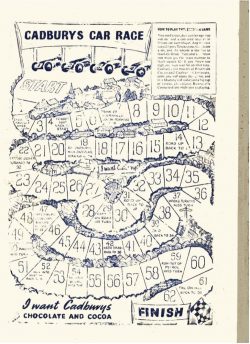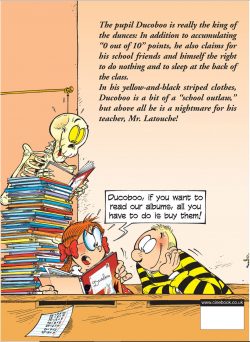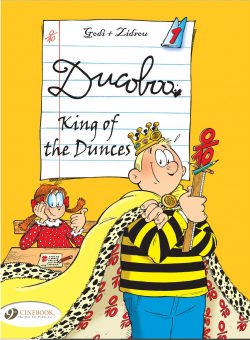

By Frank S. Pepper, Ron Forbes, Edwin Dale, Ted Cowan, Vernon Crick, & many & various (Amalgamated Press)
No ISBN: Digital edition
The 1950s ushered in a revolution in British comics. With wartime restrictions on printing and paper lifted, a steady stream of new titles emerged from many companies and when The Eagle launched from the Hulton Press in April 1950, the very idea of what weeklies could be altered forever. That kind of oversized prestige package with photogravure colour was exorbitantly expensive however, and when London-based publishing powerhouse Amalgamated Press retaliated with their own equivalent, it was an understandably more economical affair.
I’m assuming they only waited so long before the first issue of Lion launched (cover-dated February 23rd 1952) to see if their flashy rival periodical was going to last. Lion – just like The Eagle – was a mix of prose stories, features and comic strips and even offered its own cover-featured space-farer in Captain Condor – Space Ship Pilot.
Initially edited by Reg Eves, the title ran for 1156 weekly issues until 18th May 1974 when it merged with sister-title Valiant. Along the way, in the approved manner of British comics which subsumed weaker-selling titles to keep popular strips going, Lion absorbed Sun (in 1959) and Champion (1966) before going on to swallow The Eagle in April 1969 before merging with Thunder in 1971. In its capacity as one of the country’s most popular and enduring adventure comics, the last vestiges of Lion finally vanished in 1976 when Valiant was amalgamated with Battle Picture Weekly.
Despite its demise in the mid-70s, there were 30 Lion Annuals between 1953 and 1982, all targeting the lucrative Christmas market, combining a broad variety of original strips with topical and historical prose adventures; sports, science and general interest features; short humour strips and – increasingly in the 1970s – reformatted reprints from IPC/Fleetway’s vast back catalogue.
That’s certainly not the case with this particular item. Forward-dated 1954, but actually published in late 1953, it’s the first counterstrike from AP in the war to own Christmas: a delicious – but occasionally ethno-socially and culturally dated and dubious – dose of traditional comics entertainment. Big on variety, sturdily produced in a starkly potent monochrome, it offers a wide mixed bag of treats to beguile boisterous boys in a rapidly-changing world. What’s especially satisfying is that, current sensibilities notwithstanding, this volume has been digitised and can be bought and read electronically by kids of all vintages today…
I’m sure I don’t need to remind you that these entertainments were produced in good faith with the best of intentions by creators in a culture and at a time very different from ours. Very frequently attitudes and expressions are employed which we now find a little upsetting, but this book is actually one of the better examples of racial, gender and cultural tolerance. Still, even so…
The cornucopia of prose, puzzles, strips and features (all illustrated by artists as photography was too expensive) opens with a rather disturbing but truly lovely painted frontispiece ‘The Redskin Accepts the Challenge’ before a contents page promises astounding wonders to come.
We then rocket into adventure in the future where freedom fighter Captain Condor – by Frank S. Pepper and probably illustrated by original artist Ron Forbes – continues his war against despots running the solar system by solving ‘The Mystery of the Vanished Space-Ship!’ Edwin Dale then provides a prose thriller starring troubleshooter Mr. X, who discovers ‘The Tree that Stopped a Rebellion’ as he traverses the fabled African Veldt…
Presumably scripted by Ted Cowan & illustrated by Barry (R. G. Thomas) Nelson, ‘Sandy Dean’s Prize Guy’ is a comic strip wherein the schoolboy paragon and his chums deal with cheating classmates sabotaging and stealing effigies built to celebrate Guy Fawkes Night. It’s followed by Nigel Dawn’s prose thriller ‘Too Smart for the Atom Spy!’ wherein a schoolboy pigeon fancier foils a cunning espionage plot, after which we segue into a historical action strip credited to George Forrest (Cowan again).
‘The Slaves who Saved the Emperor’ follows two recently escaped British warriors who foil an imperial Roman assassination and is counterbalanced by Tom Stirling’s (E. L. Rosman) humorous text tale ‘Only a Press-Button Champ!’ This sees inventor’s nephew Jingo Jones stir up tons of trouble using his “Invisibliser” to save himself from a bully. Sadly, it also gives his headmaster and a boxing promoter the idea that the skinny runt is a fighting marvel…
‘The Weird Ways of Witch-Doctors Beat the Bush-Rangers’ (possibly by John Donnelly Jr.) shares amazing “facts” about jobbing mages in the post-war world after which John Barnes -AKA Peter O’Donnell – tells prose tale of ‘Chalu the Elephant Boy’ who clears his beloved four-legged co-worker Tooska when the big beast is framed as a murderous rogue animal…
Rex King (A.W. Henderson) delivers comic strip cowboy thrills as cavalry scout exposes a traitor and battles ‘Peril on the Tomahawk Trail’ before ‘Wiz and Lofty – Rescuers of the Kidnapped King’ (by E.L. Rosman as Victor Norman) delivers text thrills and spills as the globetrotting speed merchants stumble into a deadly plot to usurp a kingdom…
Harry Hollinson D.F.C. details and depicts some soon to be commonplace future wonders in speculative feature ‘Scientists Land on the Moon’ after which we pop back to WWII where Edward R. Home-Gall (AKA Edwin Dale) reveals in cartoon form how ‘The Lone Commandos’ scupper hidden Nazi artillery and save British soldiers in ‘Operation Gunfire’ before Vernon Crick shows in prose that ‘Rust’s the Boy for Stunts’: a rousing tale of motorcycle mayhem and skulduggery at a circus’ Wall of Death ride…
A pictorial ‘World-Wide Quiz’ tests your general knowledge before Peter O’Donnell – as Derek Knight – delivers a chilling prose vignette of Arctic endeavour as ‘Tulak Hunts the Polar Terror’, saving lost scientists, capturing murderous outlaws and stalking a killer bear…
A sea strip by A. W. Henderson as Roy Leighton sees schooner skipper Don Watson save pearl divers and solve ‘The Secret of Ju-Ju Island’ whilst Michael Fox’s prose story ‘Mike Merlin – Master of Magic’ details the greatest trick of a schoolboy conjuror before we meet one of British comics’ most enduring stars.
Robot Archie began life as ‘The Jungle Robot’ and his comic strip (by E. George Cowan & Ted/Jim Kearon) reveals how the mechanical marvel becomes the ‘Pal o’ the Pigmies’ before another prose piece by R. G. Thomas sees a western trader and his Native American pal stave off bandits and a hidden tribe of renegades in ‘Rod and the Red Arrow Raiders’…
A ‘Picture Parade of Facts from Near and Far’ precedes a text thriller by Hedley Scott (AKA Hedley O’Mant) wherein ‘The Schoolboy Treasure Hunters’ do a bit of digging and uncover presumed pirate gold with a far more modern and sinister provenance, before John Fordice (Colin Robertson) employs the comic strip form to catch ‘The Smash-and-Grab Speedster’, courtesy of consulting crimebuster Brett Marlowe, Detective as he explores the contemporary sporting phenomenon of motorcycle speedway…
Donald Dane’s prose yarn ‘Kurdo of the Strong Arm’ details the fascinating, action-packed saga of a Viking teenager – from ancient Scotland – stranded in North America hundreds of years before Columbus and leads to all those puzzle answers and final cartoon fact file ‘Fishy Tales – But They’re True!’ before a House Ad for weekly Lion – “The King of Picture Story Papers!’ brings us to the back cover and a sponsored treat: early infotainment treat ‘Cadbury’s Car Race puzzle’.
Sadly, many of the creators remain unknown and uncredited, especially the exceptional artists whose efforts adorn the prose stories, but this remains a solid box of delights for any “bloke of a certain age” seeking to recapture his so-happily uncomplicated youth. It also has the added advantage of being far less likely than other (usually unsavoury) endeavours which, although designed to rekindle the dead past, generally lead to divorce…
Before I go, let’s thank Steve Holland at Bear Alley (link please) and all the other dedicated diligent bods researching and excavating the names and other facts for everyone like me to cite and pretend we’re so clever…
A true taste of days gone by, this is a chance for the curious to test bygone tomes and times and I thoroughly recommend it to your house…
© 1955 the Amalgamated Press and latterly IPC. All rights reserved.




